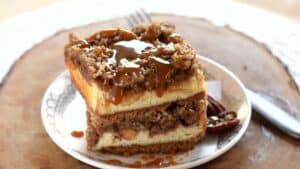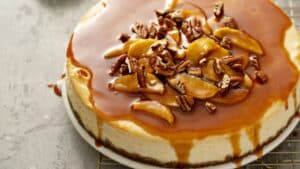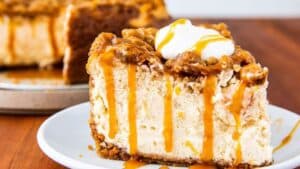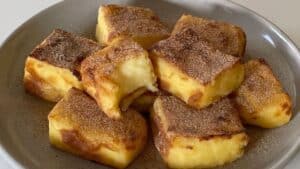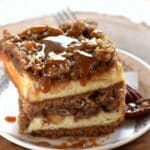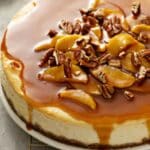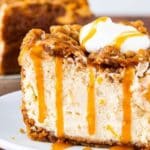Let’s just get this outta the way pancakes are already perfection. But when you take ‘em, swirl in gooey cinnamon-brown sugar, and finish with a rich maple glaze? You’re no longer making breakfast. You’re making memories. Or trouble. Maybe both. Either way, this ain’t your Sunday diner short stack. This is culinary seduction, and it wears butter like jewelry.
Now, I’ve been in the professional kitchen for over 20 years. I’ve flamed soufflés, rolled sushi with monks in Kyoto, and yes, flipped thousands of pancakes for grumpy brunch crowds. This, though? Maple cinnamon roll pancakes are the lovechild of two all-time greats and like most great things, they require care, precision, and a lil’ reckless sweetness.
This article breaks down the how, why, and what-to-avoid of crafting these indulgent showstoppers. It’s not just a recipe — it’s a roadmap for chefs and pastry pros looking to level up their breakfast game with finesse. So if you’re in the industry or a hardened home cook chasing restaurant-level glory, buckle up.
What Even Are Maple Cinnamon Roll Pancakes?
Picture this: pillowy soft pancakes with a sticky cinnamon-sugar swirl that melts and caramelizes as it cooks. Then comes the crown — a warm maple-cream cheese glaze that drips into every nook. It’s like a Cinnabon crashed into a pancake stack during a maple syrup rainstorm.
This ain’t novelty. It’s technique. A complex interaction of batters, fats, sugars, and temperature — a breakfast alchemy. We’re not just tossing sugar at flour and hoping for the best.
The Science of Softness: Pancake Batter Matters
Let’s get technical here. A pancake’s fluffiness hinges on the balance of flour, fat, liquid, and leavening. Too much flour? Tough and bready. Too little? Collapses in the pan like a bad soufflé.
The sweet spot:
- All-purpose flour: 1½ cups. Protein content matters — avoid high-gluten bread flour unless you’re feeding drywall contractors.
- Buttermilk: 1¼ cups. The acidity reacts with baking soda, creating that gentle rise. Milk alone won’t do the same magic.
- Eggs: 1 large. Binds and provides structure.
- Butter: 3 tbsp, melted. Adds richness and keeps crumb tender.
- Baking powder and baking soda: 2 tsp and ½ tsp respectively. They ain’t interchangeable. You need both.
Rest your batter. Ten minutes minimum. Hydration of the flour is crucial for even rise and smooth cooking. Skip this step and your pancakes’ll have the personality of a flip-flop.
The Cinnamon Swirl: Not Just for Looks
Here’s where it gets real. That swirl? It’s a concentrated ribbon of fat and sugar that sears itself into the batter mid-cook. Think caramelization, Maillard reaction — flavor fireworks.
Here’s the swirl mix:
- Brown sugar: ½ cup packed. Light or dark — dark gives a deeper molasses note.
- Ground cinnamon: 1½ tsp. Don’t cheap out. Fresh-ground Ceylon or bust.
- Unsalted butter: 4 tbsp, melted and slightly cooled.
Mix it, then load it into a piping bag or even a squeeze bottle. You’ll swirl it after the pancake’s been ladled onto the griddle but before flipping. Do it too early and it sinks. Too late, and it sits on top like an afterthought.
Pro tip? Freeze your swirl mix in a spiral on parchment paper ahead of time and slap it onto cooking batter. It holds shape better and caramelizes like a dream. Learned that one in a test kitchen in Denver. Never looked back.
Cooking Technique: Heat and Patience
Now, your cooking surface is mission-critical. Non-stick? Fine. Cast iron? Better. Commercial griddle? Best.
Set to medium-low. I mean it. The sugar swirl burns fast. You want a slow cook, around 300°F if you’re using a griddle with a temp dial. No one wants a blackened pancake unless you’re cooking for someone who also enjoys burnt popcorn.
Ladle ¼ cup batter per cake. Wait till the edges set, then swirl in your cinnamon sugar. Flip once, gently. You’re not making burgers here — treat it like you’re flipping a Fabergé egg.
The Maple Glaze: Crown Jewel of Sweet
You could slap on maple syrup and walk away. But you’d be leaving flavor on the table. Literally.
This glaze is stupid good:
- Cream cheese: 4 oz, softened. Adds tang and body.
- Powdered sugar: ½ cup. Sift it, please.
- Pure maple syrup: 2 tbsp. Grade A dark amber. Accept no substitutes.
- Milk: 2–3 tbsp. Just to thin. Go easy.
Whip until smooth and pourable. Then, warm slightly before drizzling. Never apply cold — it’ll seize and ruin the pancake’s texture.
I’ve seen executive pastry chefs in New York screw this part up by rushing. Don’t be that person. Respect the topping.
Plating Like a Pro
Presentation matters. Always. You eat with your eyes before anything touches the tongue.
Stack three pancakes high. Drizzle glaze in a zig-zag pattern — not circular, not dumped. Garnish with a dusting of cinnamon or a sprig of mint if you’re feeling fancy. Want crunch? Candied pecans. For brunch service, I finish mine with a brûléed banana half. Adds flair and drama. People love drama on their plate.
Common Mistakes to Avoid
- Overmixing the batter: Gluten activates fast. Stir just until combined. A few lumps are fine.
- Swirl melting through the batter: Wait too long to pipe, and you’ll lose the swirl. Chill it if you must.
- Cold pan syndrome: First pancake flop? Likely your pan wasn’t hot enough. Always sacrifice the first one for the cause.
- Too much glaze: It’s a glaze, not soup. Think accent, not deluge.
Industry Insight: Why These Pancakes Sell
Here’s what restaurateurs love — these stack up on Instagram. Visually dynamic, texturally exciting, and buzz-worthy. At my last brunch pop-up in Austin, these moved more than any egg dish, despite being higher cost.
We charged $16 per stack. Ingredient cost? Under $2. Gross margin? Ridiculous.
They photograph well. They feel indulgent. And they create customer loyalty. People come back just for that weird little maple smile on top. And when you serve it right, they bring friends.
The Nutritional Angle (Yes, Really)
Okay, yeah — these aren’t health food. But interestingly, portion control works wonders. A single 4-inch pancake with glaze clocks around 240 calories. Compare that to a frosted donut, and you’re not off by much.
Want to go lighter? Use Greek yogurt in the batter instead of butter. Sub coconut sugar for brown. Use low-fat cream cheese. Is it the same? Not quite. But it scratches the itch without busting belts.
Emerging Trends and Variations
- Vegan Maple Cinnamon Roll Pancakes: Replace dairy with oat milk, egg with flax. Coconut oil instead of butter. Works surprisingly well.
- Gluten-Free: Cup-for-cup GF blends do the job. But add ½ tsp xanthan gum for stability.
- Savory fusion: Hear me out — swap glaze for spiced mascarpone, add bacon bits to the swirl. It shouldn’t work. But it does.
These kinds of hybrid dishes are gaining traction in boutique cafés and gastro brunch spots across London, Melbourne, and Seoul. It’s the breakfast version of fusion sushi — weird enough to be interesting, tasty enough to be unforgettable.
Final Thoughts and Takeaways
Maple cinnamon roll pancakes aren’t just a trendy dish. They’re a masterclass in contrast — soft and crunchy, sweet and tangy, warm and sticky. For chefs and pros, they offer a chance to practice precision, flavor balance, and visual flair.
Keep your technique sharp, your ingredients fresh, and don’t skimp on the resting time. Respect the process, and you’ll get a dish that customers (and your staff) talk about long after brunch is over.
You’re not just flipping pancakes. You’re building a moment. One gooey, golden, sticky bite at a time.
So go on. Swirl like you mean it.

